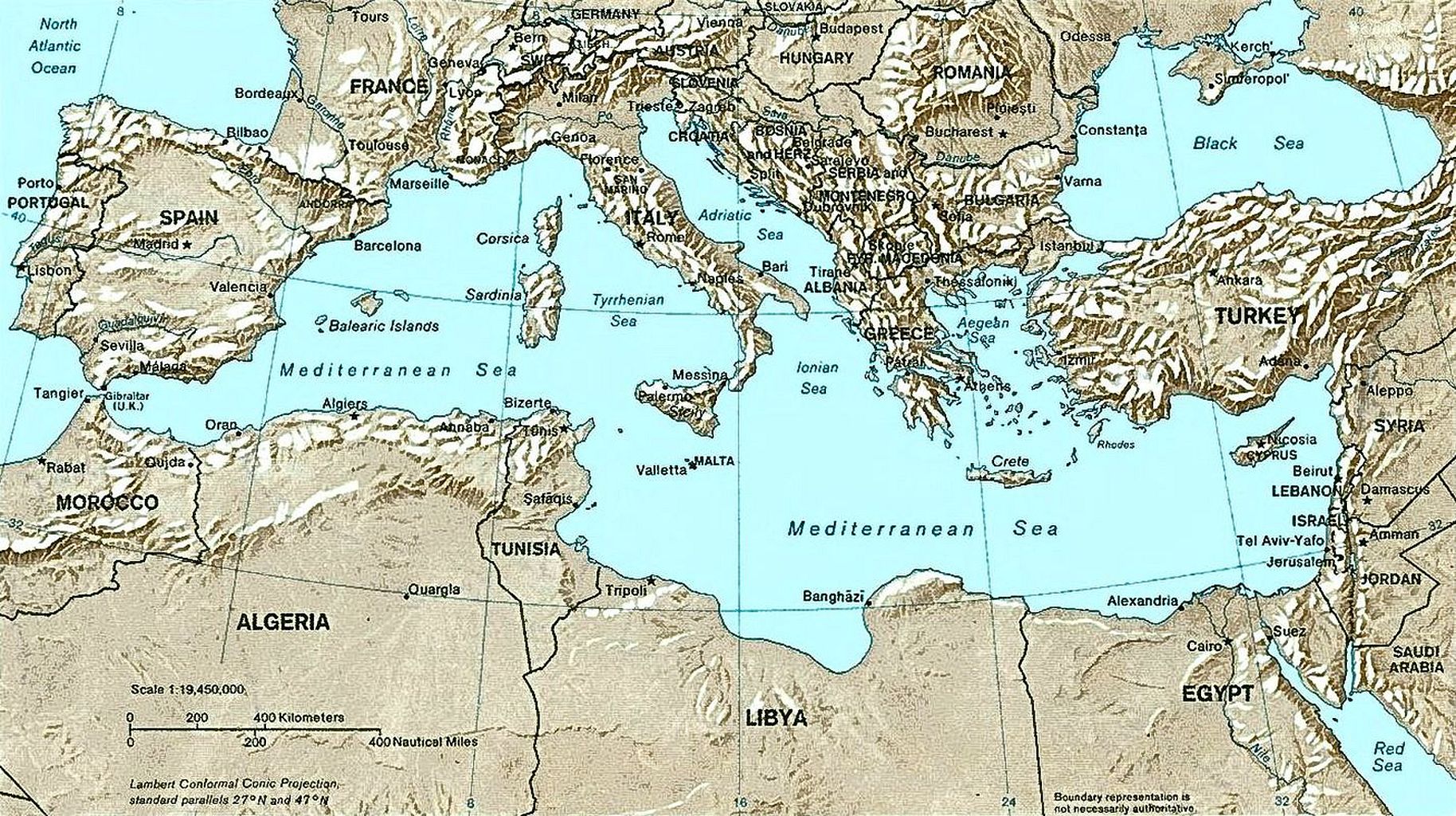Hitler now faced the possibility of a long stalemate. He turned at first to the strategy of getting at Britain through its Mediterranean lifeline to India and the East. His ally Mussolini invaded Greece from Albania in October 1940 without informing Hitler. The Greeks pushed the Italians back halfway across Albania, but the Germans rescued Mussolini.
Just how far Hitler himself wanted to invest in the Mediterranean is not clear. Certainly he toyed with the idea of a campaign against the British fortress of Gibraltar through Spain. But Franco wanted too high a price from the French for his consent to a German march through Spain, and Hitler was unwilling to risk driving Vichy France, which still controlled French North Africa, too far.
The Germans had to be content with backing up Mussolini in Greece and attacking Egypt from the Italian colony of Libya. Their efforts to organize local action against the British and French in the Middle East were suppressed without grave difficulty by British and Free French troops in Syria.
The German commitment to help the Italians in Greece took valuable German divisions away from another task in the spring of 1941. Though Hitler forced on a frightened Yugoslav government a treaty allowing German forces free passage across Yugoslavia to Greece, a Serbian uprising overthrew the Yugoslav regime, and thereafter the Germans had to combat guerrilla resistance and to dismember Yugoslavia.
The British did their best to back up their Greek allies, but once more they were not strong enough. German air power crippled British naval power in the Mediterranean, and by May the Axis had conquered the Greek mainland. The British defeat appeared total, but in fact the Germans had invested far too much armament in the Balkan campaign.
The other task for which the German forces were needed in the spring of 1941 was the conquest of the Soviet Union. Hitler had firmly resolved not to engage in a war on two fronts. Yet by his invasion of the Soviet Union on June 22, 1941, he committed himself to just such a war. The Soviet Union was indeed a tempting goal.
The Nazi plan had always looked to the fertile areas of Poland and southern Russia as the natural goal of German expansion. After the successful blitzkriegs in Poland, western Europe, and now Greece, Hitler and his military experts believed that they could beat the Soviets in a single campaign before winter set in, a view British and American military advisers privately shared. Once the Soviet Union was conquered, the Germans would have little trouble disposing of Britain.
Furthermore, Hitler had returned to his old suspicion of Bolshevism. He knew that Stalin had agreed to the pact with Germany for opportunistic reasons, and that the Soviet Union might well change sides in any event. The pact had destroyed Poland, the natural wall between the two enemies. And the Soviet Union had already been expanding in ways that reinforced Hitler’s distrust. In June 1940 Stalin had demanded of Romania the province of Bessarabia, and also northern Bukovina.
The Germans had expected the Soviet seizure of Bessarabia, but not of northern Bukovina; they permitted the seizure, however, telling the Romanians that they could expect no help from Hitler. But that was as far as Hitler’s cooperation with Stalin in eastern Europe went. The reannexation of Bessarabia had given the Soviets the mouth of the Danube, controlling an important artery. The Soviets seemed to be moving into southeastern Europe, a region in which the Germans were not prepared to let them operate alone.
Only a few weeks after the Soviet seizure of Romanian territory, Hitler asserted his own southeastern interests by forcing the Romanians to cede territory to Hungary and then guaranteeing the new Romanian frontiers, a guarantee that could apply only against the Soviets. Soon afterward German troops appeared in Finland, “to reinforce the German armies in Norway,” Hitler explained.
And in the autumn of 1940 German troops entered Romania proper “to guard the Romanian oilfields against British sabotage.” These maneuvers on his new frontiers deeply disquieted Stalin. Then in October 1940 Italy attacked Greece, and the war spread to the Balkans; German troops moved into Bulgaria, which the Soviet Union regarded as essential to its own defense. With Germany established in Yugoslavia and victorious in Greece by May 1941, Stalin knew that an invasion of the Soviet Union was logically next.
The Soviet Union was not conquered, but Hitler’s plan almost worked. There was a successful blitzkrieg; within two months the Germans were at the gates of Leningrad, and by the end of October they had conquered the Ukraine. Soviet losses rose into the millions of killed or captured. In sheer distance, the German armies had pushed more than twice as far as they had in France.
Yet as the Russian winter closed in, the Germans had taken neither Moscow nor Leningrad. Much Soviet heavy industry had been transferred to the remote Urals, and existing plants there and in Siberia had been strengthened. The vast resources of the Soviet Union were still adequate for Soviet needs. The government had not collapsed, and national spirit was high. Moreover, the Germans had shown once more, as they had in the battle of Britain, that their planning was far from perfect.
Their troops were not sufficiently equipped to withstand the rigors of a Russian winter. Confident that the summer and autumn would be sufficient to finish the campaign, the German planners had left the winter to take care of itself. In winter fighting between December 1941 and May 1942, the Soviets regained much useful ground.

